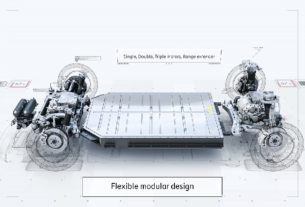
With greater vehicle electrification and the rise of disruptive technologies such as vehicle-to-grid (V2G) and peer-to-peer blockchain trading, utilities are expected to employ smart charging and demand response programs to cope with the growing demand for energy. Cumulative electric vehicle (EV) sales are set to increase to 34 million in 2025, 121.2 million in 2030, and 636.7 million by 2040, driving the cumulative power demand from 11,612.6 TWh in 2018 to 19,756.8 TWh in 2040.
“Utilities will play a bigger role in the transportation electrification revolution with offerings such as EV-specific dynamic pricing, integration with decentralized storage units, vehicle-to-anything (V2X), and workplace charging incentives. Collaborative efforts between various stakeholders in the automotive and energy value chain are critical for utilities to offer competitive bundled services and products” said Frost & Sullivan’s Energy & Environment Analyst.
Frost & Sullivan’s recent analysis, “Impact of Electric Vehicles on Power Demand, Forecast to 2040 —A Perspective on Key Global Growth Markets”, provides a holistic overview of EV penetration and its potential impact on energy demand. It analyses its effect on stakeholders such as EV manufacturers, battery suppliers, power utilities and infrastructure, EV end users, regulators and external actors, and EV aggregators. It also presents recommendations on the strategies for energy service providers and the action plan for utilities. The study covers the geographical markets of the US, Europe, the UK, Germany, China, and Japan.
“China and the US are likely to face a supply gap in the early-to-mid 2030s, while Germany and Japan have around five years longer before the situation becomes critical. However this supply deficit is only part of the issue. EVs will bring considerable variable load onto the grid, which is an opportunity – as long as there is investment in the 2020s to handle this” noted the analyst.
Currently, many utilities in key markets are still exploring options in terms of EV charging and tariffs. The majority of the grid investment is expected to be focused on the distribution side, aimed at increasing the capacity. For greater investment opportunities, utilities will look to:
· Innovate business models to incentivize consumers to charge EVs. Charging solution providers, utilities, technology solution providers, and EV manufacturers must engage in dialogue and working groups to ensure standardization and availability.
· Invest in digital support applications for charging solutions, which provide users with real-time updates on electricity pricing and slot availabilities at charging stations.
· Partner with OEMs and battery manufacturers to design efficient batteries that can be used as a valuable grid asset or a backup solution.
· Deploy charging infrastructure with distributed energy resources and smart buildings to make the most of the flexibility of EVs while stabilizing the electric grid.
· Offer a fixed monthly price to the customer for various products and services. These may include EV chargers, smart thermostats, V2G services, demand response, and more.
“Impact of Electric Vehicles on Power Demand, Forecast to 2040—A Perspective on Key Global Growth Markets” is part of Frost & Sullivan’s global Energy & Environment Growth Partnership Service program.





